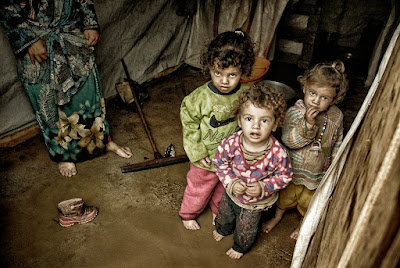
The first time I wired a photo was while on assignment in
Bosnia shortly after the war in 1998. Working
with my great friend and colleague Hazel Southam we were sending our story back
to the Independent, a British national newspaper and paper of the year for
photography. Getting my photo back was
a big deal. It was a simple story with a
serious undertone. Landmines go on killing
for years, long after conflicts have ended.
The rules may attempt to govern the use of landmines but the number of
victims still keeps growing each year. In
Vietnam children lose limbs and their lives.
And in Bosnia the entire land was deemed a minefield. If your vehicle left the road you were to
wait for rescue, a narrow pathway would have to be secured after hours of work by
trained professionals checking for mines.
Cluster mines were dropped by parachute, chrome balls that kids would
love to pick up. And anti-tank mines
were set to explode under a bridge or in buildings where whole communities were
gathered to die. I remember a pile of
rubble that was once a church, now it had a cross left on top as a memorial.
Our story told of British soldiers teaching kids landmine
awareness. We had been on patrol where
they were gaining the trust of the locals, who were largely controlled by mafia. We had watched soldiers training to clear
minefields, and a vehicle waiting for rescue after it had precariously left the
road. We had watched soldiers play with the
kids. We had driven for miles through
wide planes where shot out tanks were left to rot, where villages lay waste,
like Lord of the Rings where evil hoards had taken everything in their
tracks. And villages where no one was left
alive – after genocide nothing seems to live, the land seems haunted not just
with the dead but with hate and fear and darkness. Silence broken by a crow, smoke rising from a
few of the remaining buildings. Many
were tortured before they died – limbs and hands removed, eyes removed –
medieval. Soldiers driven near crazy
after removing remains from a drainage system, piece by piece.
As a journalist you get to hear people talk. One soldier spoke of letting rip after
getting home. It should not be a
surprise. We expect our soldiers to
release the most primal instinct to kill or be killed and then equally expect
them to get things back under control.
Ignorant words spoken against the conflict, where this particular soldier
had risked everything, were the trigger to release the rage and pain he held
within. He did not kill this man, but he
himself had spoken of being left behind enemy lines and sending radio signals
for help that was never to come. He and
his unit are the ones who should be dead.
Within all this, our story and my photo trying to get back
to England, to reach the deadline for the next day. We drove for forty miles, slow narrow roads where
snow had fallen and ice was forming, through the minefield that was the entire
land. The film had first to be processed
and then scanned – jpegs were developed for this purpose, to compress a file to
be wired home. The twenty-foot satellite
dish kicked out some serious radiation; you don’t go near the dish – and the
cost for transmission, $30 a minute. The
first attempt failed after about five minutes.
And so it went, 10 minutes and failure, 15 and failure. On the fourth or fifth attempt the picture
got through. Would the story run? Would the photo editor approve my
picture? I had no way of knowing, but as
we drove back through the night I remember looking out from the back of the
Landrover, it had no seats, just rucksacks for padding and a canvas top
flapping in the wind. Headlights from a
stray car shone on the rocks of the mountain road and I wore a simple smile.





